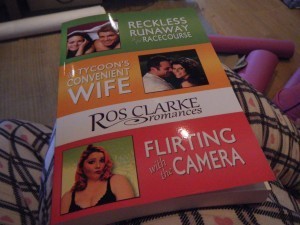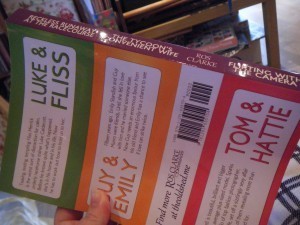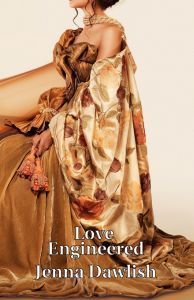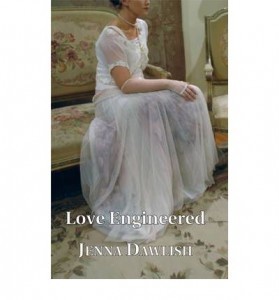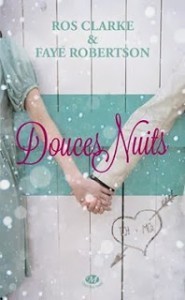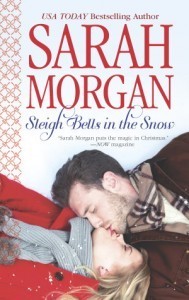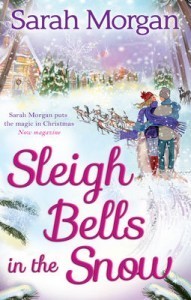Ros Clarke's Blog, page 10
December 13, 2013
The limitations of inspirational romance
So, yay, characters of faith have an entire subgenre to themselves, usually known as “inspirational romance”.
My enthusiasm for this subgenre is as limited as the genre itself. Here’s some obvious limitations:
1. It only features Christian characters, not characters of other faiths. There was an RWR article about inspirational romances recently, in which the author referred to ‘Christian romances’. The magazine included a disclaimer, pointing out that ‘inspirational romance’ was the standard term and could include other faiths. Except it never does. Unless I’ve missed it? I’d LOVE to know if there are non-Christian inspirational romances out there, but all the publishers I know of are specifically Christian (see e.g. Harlequin Love Inspired, Harlequin Steeple Hill, Bethany House, Desert Breeze).
2. It represents and is targeted at one specific kind of Christianity. This is not completely true. There are, for example, Amish romances. I don’t know if Amish people read them, but I suspect that the Amish community is not the main target market. I suspect that the main target market is Bible Belt America. Because, ultimately, inspirational romance is about making money for publishers, so they are going to want books which appeal to the largest possible market. This shows itself, I think, in the strong focus on morality, and the tendency to small town settings. Here’s what the Love Inspired writing guidelines say:
Strong contemporary romances with a Christian worldview and wholesome values.
Relationships that emphasize emotional intimacy rather than sexual desire.
Mandatory faith element that is integral to story and shows rather than tells, avoiding didactic, preachy tone or doctrinal language.
Family and community are strong features of this line.
Stories can be set in small town USA or close knit communities in urban settings.
No drugs or alcohol consumption, gambling, or profanity by Christian characters.
No graphic violence or pre-marital sex within the course of the story.
These books represent a very specific image of what Christian life is like. It’s wholesome. It focusses on family and community. Christian characters do not commit specific kinds of socially-unacceptable sins. No alcohol consumption is a dead giveaway here. Most Christian denominations don’t have any formal rules or unspoken taboos against drinking. The Southern Baptists, however, are generally teetotal. So if you want them to read your books without clutching their pearls, don’t let your Christian hero relax in the evening with a beer. The Southern Baptists are the second largest denomination in the US, after the Roman Catholics.
3. Inspirational romances are often focussed on lifestyle, rather than faith.
So, our hero and heroine probably go to church. They may or may not say grace before meals. That’s often the extent to which their faith is recognisably Christian, to me. For many, their Christianity mostly seems to be about doing good things for the community, for others it’s environmentalism, nursing, or just being plain nice (or a doormat. Either one is fine.)
4. When they are focussed on faith, it gets confused with the romance.
This is the conversion narrative. In order for the romantic happy ending, one of the characters has to become a Christian. I find this incredibly problematic for two reasons. First, it can be hard to distinguish true faith from the willingness to go along with it for the sake of a loved one. Authors do their best with this, but I’ve seen it fail too often in real life to find it convincing in a narrative. Maybe this is a place where an epilogue could help to show that the faith as well as the love is longlasting. But I also find it problematic from a narrative perspective. When I’m reading a romance, I expect the climax of the story to be in the romantic resolution. But for me, a romantic resolution is always going to be eclipsed by a faith conversion. It is more important to me that a person has saving faith in Christ than that they fall in love. I think it’s really hard to negotiate the two separate journeys towards faith and love in one novel while getting both in their right place.
5. Writing about the interior life of faith is hard.
I think it’s incredibly hard to do this in a way which will resonate with readers who have their own faith and still be comprehensible and plausible to readers who don’t. For me, one of the great examples of a romance character of faith is Maddy in Flowers from the Storm. But if you read reviews of the book, she is regularly castigated as prim and prissy. A lot of readers hate her and many more can’t comprehend why she acts in the way that she does. I suspect that this is partly why many writers of inspirationals stick to the external things – church attendance, for instance, is easier to describe and understand than discerning God’s call to the mission field.
I think that the inspirational subgenre is faced with an almost impossible task. It’s aiming for a particular target audience who can be easily alienated by all kinds of characters and tropes, including many characters of faith. It’s struggling with a fundamental narrative that outshadows romance, and an interior life that is incomprehensible to many readers. I’m not surprised that I’ve struggled to find inspirational romances that I enjoy.
Here’s a sampling of the ones I have read:
The Cubicle Next Door by Siri Mitchell
Cute romance, hardly any religious content. Heroine is strong environmentalist and this seems more important to her than her faith. They end up going to a Roman Catholic church because, although they aren’t Catholics and can’t take Mass, they are asked to help serve coffee after the service.
The Boss’s Bride by Brenda Minton
Small town America is not my favourite setting, but if you like it, you’ll probably enjoy this. I think it’s part of a series but I hadn’t read any of the others and it didn’t matter. In this one church is basically community involvement – they paint old ladies’ houses and organise a shopping festival. They say grace before meals but other than that, there’s almost no Christian element. At one point the hero considers inviting a friend to come to church with him, but decides against it.
Against the Tide by Elizabeth Camden
I thoroughly enjoyed this one. It’s a historical in a really unusual setting with a fascinating plot. The hero is a Christian, having come to faith after being involved in some serious criminal activity. The heroine has an interesting background, with no formal religion. I believed her journey towards faith and I liked that even at the end, she’s not a cookie-cutter Christian. This does, however, suffer somewhat from the salvation-is-the-happy-ending syndrome, though it’s complicated by another redemption storyline too.
The Doctor’s Mission by Debbie Kaufman
I had high hopes for this one. It’s another historical, featuring a medical missionary and the female nurse sent to work with him. Unfortunately, the book suffers from a tendency to preachiness and I also found it hard to believe in the romance. There’s also some problematic depictions of the African characters in the book (see this great review for more details).
The Earl’s Mistaken Bride by Abby Gaines
Historical marriage of convenience category romance. Totally up my street. And there was a lot I liked about this book, but I couldn’t get past the mingling of the conversion and romance plots, so the ending left me worried and dissatisfied.
So, I think inspirational romance is not for me. On the other hand, I read a fabulous contemporary romance yesterday about a pastor which I thoroughly enjoyed. I’m going to interview the author and talk about how she made religion work so well in her romance.
December 11, 2013
Ros Clarke Romances
The print anthology has landed! I’ve just approved the proof copy and it’s now available to buy at Lulu. In due course it will also be available via Amazon and other online retailers. Here’s the blurb:
Three fun, sexy romance novellas from Ros Clarke including:
Reckless Runaway at the Racecourse
Teasing, testing, tempting Fliss Merrick is the worst sort of distraction for calm, orderly racehorse trainer Luke Caldecott. Before he knows quite what’s happened, she’s in his home and in his life. Now he has to work out how to hold on to her.
The Tycoon’s Convenient Wife
Fifteen years ago, Emily Standish and Guy Munro were friends. Until she fell in love with him and he married someone else. Now Guy needs an enormous favour from his old friend and Emily has a chance to see if love can strike twice.
Flirting with the Camera
Hattie Bell is beautiful, brilliant and bigger than your average plus-sized model. Sparks in the studio of top fashion photographer, Tom Metcalfe, set off a sizzlingly sexy affair that has both of them revealing more than they’d bargained for.
And it has a shiny new cover:
Would make an ideal Christmas present for anyone who likes reading romance novellas in print anthology format. It’s £10.99 but if you buy it today, there’s a 30% off code: #decktheshelf which makes it not much more than the combined price of the digital books. Bargain!
December 3, 2013
Why I won’t be adding my print anthology to Kindle Matchbook
A few months ago, Amazon launched a new scheme whereby you could get the kindle version of a book that you’d previously bought a print copy of for free or at a reduced rate. Terrific idea. I would LOVE to get cheaper kindle versions of, e.g. my Heyers. Sadly I can’t, for various reasons to do with the restrictions of the scheme. As an author who self-publishes through Kindle, I was invited to sign my books up to the scheme. At the time, the only self-published print edition I had was for Reckless Runaway at the Racecourse and I really only did it for a couple of non-ereading friends who were keen to buy copies. So I didn’t bother.
I’ve just finished formatting and uploading the print anthology of Reckless Runaway at the Racecourse, The Tycoon’s Convenient Wife and Flirting with the Camera. This is a book I’d actually like to sell some copies of and make some money on. Obviously all those books are available in kindle format and it would be trivial to make a kindle anthology of them to enter into the matchbook programme alongside the print anthology. But I’m afraid I won’t be doing that and here’s why.
I can’t afford to.
Let me explain. At the moment, those books are all on sale for £1.93.* I make 70% on each sale (Mostly. Some regions only pay a 30% royalty.). So that’s £1.35. If a reader buys all three, that’s £4.05. Even if I did a digital bundle for, say, £4.50, I’d still make £3.15 for each sale.**
The print anthology is probably going to retail for £10.99. I’d hoped to bring it in under £10 but I don’t think I can do it. It will be 371 pages long, trade paperback sized. I feel like £10.99 isn’t excessive for a book of that length, but unfortunately print on demand books will always be more expensive than trade. If you buy that through Amazon (which you need to for the matchbook scheme), my share will be £0.45.
That means that in the matchbook scheme, I would make 45p for the print book and be throwing in as a freebie a book that would normally make me at least £3.15. Or I could set the digital matchbook at £1.93, so the total take home for me: £1.80. Whichever way you look at it, that just doesn’t add up.
I do understand why, as a reader, the scheme is very appealing. Ebooks feel like they ought to cost less, and indeed, often they do. It makes sense to allow print and digital bundling at a lower price. But I can’t make it work for me the way that it has been set up.
*It’s $2.99. But I’m going to do this in sterling because I’ve been using Lulu.co.uk for the print version.
** This is coming, but I’m not sure exactly when.
November 29, 2013
Reading and aftertaste
I don’t drink things with artificial sweeteners in them. It’s not the taste that I don’t like, it’s the aftertaste. Ugh. A couple of the books I’ve read this week have had unexpected aftertastes for me. But first, here’s what else I’ve been reading:
Fools Rush In, Janice Thompson. More inspie reading. I struggled through this one, mostly because the setting and the humour are just not my thing at all.
Backstage With Her Ex, Louisa George. New to me M&B author. There was lots I liked about this and I would read her again.
Turn to the West, Sara Seale. M&B first published in 1953. I enjoyed this very much indeed, so thanks must go to Sunita, who recommended Seale and a handful of other vintage M&B authors. It’s a boss/employee story and in addition to that, there’s a big age gap. And yet Seale managed to make it work without the power dynamic becoming too imbalanced.
One of the Family, Mary Burchell. M&B first published in 1939. I really liked this. The characterisation of the mother is masterful. In fact all the secondary characters are very well done. It’s a lot longer than modern category romances and I really appreciated that. But this was one of my aftertaste books. Once I’d finished reading and got to the wonderful happy ending, I couldn’t get the publication date out of my head. I couldn’t let myself forget what 1939 entailed and what it would mean for this couple and their family. I don’t know if M&Bs were published throughout the war – I have a vague memory of paper shortages meaning that lots of publishers had to cut back. There is just one line in the book that hints at the wider political situation, when the heroine says that ‘it’s a daily thing now for people and even whole nations to shirk their decent responsibility…’ Indeed. I have one more vintage M&B left from the boxed set I bought on Amazon for 1p, and it was first published in 1947. I’m very curious to see whether the war and its after-effects are mentioned. There was still rationing in 1947, for instance. I will report back when I’ve read it.
Author: Jenna Dawlish
Publisher: E-scape Publishing
Date: 2009
Cover Art:
The copy I bought has the first cover. The second cover was the one listed at the Book Depository. I don’t like either. They are classic amateur book covers using one stock photo with inappropriate and distracting typography. The stock images aren’t particularly eye-catching in the first place and don’t signify romance to me. Plus I’m not sure which historical period was the one where women wrapped themselves in curtains and tied the tassels round their necks. The amateur treatment of them makes it even more likely that I would pass over this book. I didn’t because (1) it was free, (2) Victorian Lady Engineer!, and (3) it was shortlisted for an RNA award, so I was hopeful that the writing might be pretty good. (Spoiler: it wasn’t.)
Hero: Charles Lucas, engineer. A bit like Brunel, but not as good or as famous. From a middle-class background; his father was a lawyer. He is… okay, I guess? At one point he jumps to conclusions, so that there can be a Big Misunderstanding. Mostly he’s pretty nice, but a bit blah. He has a sister who conveniently becomes friends with the heroine, and a business partner who pushes him to become friends with the heroine so that she’ll invest in their bridges.
Heroine: Louise Thomas, secret engineer. I just didn’t buy this at all. I mean, I would LOVE books to be written about secret and not-secret lady engineers. But I didn’t believe that Louise was one. There was nothing about the way she talked, the questions she asked or the so-called experiments she undertook that made me think for a second that she had a scientific mind. For example, she first meets Charles after hearing him lecture about a new bridge he is building. She asks questions about working conditions for the labourers, how to pick contractors, and whether Mr Brunel would have won the contract if he had entered the competition. She does not ask anything about loads or tensions or pivots or balances or indeed anything to do with the engineering. And then she is irritated when other people start to ask questions about things that she considers basic.
Other: Cartoon villain. Wholly superfluous friend from Louise’s village who accompanies her on wholly superfluous trip to Paris where NOTHING HAPPENS. Several engineers. Charles’s mother and sister. Louise’s cousin whose only role is to make Charles think she’s going to marry him. She isn’t. This is not the Big Misunderstanding, it is a Medium-Sized Misunderstanding.
Marriage: Yes, blessedly brief in its description.
Enjoyment factor: I can’t remember the last time I’ve been so bored by a book. 24% of the way through I contemplated giving up. I made myself carry on, in the hope that it would improve. It didn’t. I wanted it to. I really wanted to read an awesome book about a Secret Victorian Lady Engineer. I hope someone else will write one. But this book suffered from tedious prose and lack of narrative structure. There were a lot of strands that could have been brought together in much more exciting ways. I’d love to see what a Courtney Milan or a Sherry Thomas would have done with this plot.
Epilogue: Hahahahaha! This was the main reason I wanted to review this book. If you look on Amazon or Goodreads or wherever, you’ll find lots of reviewers getting excited about this book being based on a true story. Spoiler: IT ISN’T. The epilogue is written in the form of extracts from encyclopaedia (a MADE-UP encyclopaedia) entries for Sir Charles Lucas, Lady Louise Lucas, and Robert Adams, the pseudonym for the Secret Victorian Lady Engineer, Louise Thomas. It’s quite well done and is possibly the most imaginative writing in the whole book. But, still NOT TRUE. There is no International Institute For Female Engineers and they do not award the Robert Adams Award for Excellence in Engineering. Sorry if you’ve read this and I have just dashed all your illusions.
So, I didn’t enjoy reading the book, but it also had an aftertaste. Partly from seeing the reviews, which made me think a lot about when fiction tips over into deception. I don’t think there was any intent to deceive in Love Engineered. Readers who confuse an Epilogue for an Author’s Note are clearly wrong. But I’d just finished reading this when someone tweeted about a different book that had false information in an Author’s Note, and it did make me think about how easy it is for authors to mess with readers heads.
But mostly I’ve been wondering how on earth this book ended up on an RNA shortlist. RNA prizes aren’t quite RITAs. We don’t have such a big romance industry here in the UK. But they are still prestigious awards. I just don’t know. Maybe it’s a matter of taste and other people loved this. Maybe there aren’t many nominations to choose from. Maybe I’m missing something.
November 21, 2013
No review this week
I had been planning to review one of the books I read but it turns out that it was written by the kind of author who thinks it’s okay to troll negative reviews. As it happened, I quite liked the book, but I’m not into rewarding that kind of behaviour. So no review from me.
Other things I read this week include:
A Grosvenor Square Christmas – collection of novellas. Mixed, as you’d expect. The novellas take up 84% of the book with the rest being promo excerpts. I thought that was a reasonable ratio. The story I enjoyed most was One Kiss For Christmas by Vanessa Kelly, and the two I enjoyed least were The Seduction of a Duchess and The Last First Kiss. The Seduction of a Duchess had a ludicrously implausible plot and The Last First Kiss had a writing style that I found like nails on a blackboard. There is a framing story that is ridiculous and I feared its conclusion from the start. Disappointingly my fears were proved right. If you are the sort of reader who does not care about issues of historical plausibility, you might love all these. And it’s free, so there’s that.
Caroline’s Waterloo and The Hasty Marriage, Betty Neels. There’s a great post about the attractions of Neels’ book and a comment with some recommendations on Miss Bates’ blog. These were two of the recommended titles and I loved them both.
Miss Bates is hosting a book club discussion of The Great Gatsby on December 8th. Unaccountably, I have never read it, so I am going to try and read it in time for the discussion.
And that’s it, apart from the Book That Shall Not Be Reviewed, and a lot of lovely books by Isobel Kuhn which I re-read for church this week.
November 14, 2013
And in other news…
Twelve Days is finally free at Amazon.com though not yet in the UK, sorry.
Last Night of the Summer is now available to buy at Amazon, hooray! Still waiting on Smashwords to distribute everywhere else, but it’s been approved so it should be within the next couple of days.
And All I Want For Christmas is coming out in French on 6th December. It’s in a paperback with another Entangled novella and look at the pretty new cover!
The French title for my story is ‘Sous Le Gui’ or ‘Under The Mistletoe’. That little heart says ‘Toi et Moi’. SO CUTE. I love it!
Scholarly romance novel covers
I’m not sure these really need any context, but for the background, see this post (and go look anyway, because those covers are hilarious. Especially the one for Heyer’s The Corinthian). Since my books are contemporaries, rather than historicals, I have taken inspiration from a slightly different genre of academic books.

(Based on Biomedical Informatics; image from wikimedia commons)
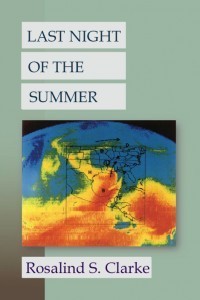
(Based on Mid-Latitude Weather Systems.)
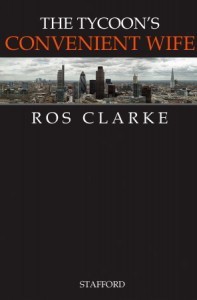
(Based on A Brief History of Neoliberalism, image from wikimedia commons)
November 12, 2013
In which I review a book I didn’t like
Because I can.* But first…
What I’ve read this week:
Stranded with a Scotsman, Serenity Woods (short story with big clunking Truth or Dare plot device, didn’t love it)
Pandora, Jilly Cooper (re-read, still brilliant as always)
The Change in Di Navarra’s Plan, Lynn Raye Harris (requires higher than normal suspension of disbelief, even for an HP)
The Cubicle Next Door, Siri Mitchell (I’ve been reading inspies for an new religion and romance post; it was okay)
The Boss’s Bride, Brenda Minton (ditto)
And this week’s pick for a review: Sleigh Bells in the Snow
(Note: I’m twitter friends with Sarah.* In the past she’s been kind enough to send me free copies of a couple of her books, but I paid for this one. Full price, even though it was later heavily discounted. Yes, I’m cross about that.)
Author: Sarah Morgan
Publisher: Mills and Boon/HQN. It’s Morgan’s first single title for Harlequin/M&B and I was excited to see what she’d do with the extra wordcount.
Date: 2013
Cover Art
I don’t love either of these. If I were not already a Sarah Morgan fan I don’t think either would have got me to pick the book up. On the other hand, as a Sarah Morgan fan, I do like the way her name is huge on the US cover. That’s a sign of confidence in her that is well-deserved. But that upside-down Spiderman kiss? That always looks weird to me.
Hero: Jackson O’Neil, CEO of a series of luxury winter sports hotels in Europe. Now back at home to drag the family business back into profitability, despite the help of his family and with the help of a PR genius he’s brought in from New York.
Heroine: Kayla Green. Single, British, twenty-something, hates Christmas, has truly awful parents who messed her up badly. Works for a PR company in New York. Has never been to Vermont in winter, but is willing to go for work and to escape Christmas. Unfortunately Christmas is waiting for her in Vermont, along with Jackson’s loud, chaotic family, home and business. All her worst triggers, in fact.
I admit, I never really bought into Kayla as the PR genius. Her presentation to the family was so ill-judged, that even if it had been made in a boardroom with everyone in a business suit, it would have been a disaster. Basic research would have helped with that, as well as with some more sensible packing. I’ve never been to Vermont in winter either, but I’d have made sure I had snow boots to wear. To be honest, you need snow boots even for New York in winter.
Other: Cast of thousands, mostly related to Jackson. I was most disappointed with this part of the book, actually. There are two secondary pairings, one of which appears early on in the book and I was at least expecting that one to be resolved by the end. That’s part of what I like about the longer single title books, is that they have room for a secondary romance. But no, these were both sequel bait. There’s a storyline about Jackson’s niece which parallels Kayla’s backstory in some respects. There’s a grumpy grandad, who comes round in quite a nice way. There’s a puppy.
Marriage: This was where it really went wrong for me. I’d been mostly enjoying the first 80% of the book. Jackson and Kayla’s romance was going slowly and cautiously. She has a ton of baggage and they only have a week together, and I liked that they weren’t racing to the altar. Except that at the end they are. The proposal comes out of nowhere and I absolutely didn’t buy the eventual outcome of it.
Enjoyment factor: So, okay, I am maybe more of a Christmas grump than most people, but I set out to enjoy this book and wanted to be drawn in to the magic of Christmas at Snow Crystal. There were some really good scenes and, like I said, I did mostly enjoy most of the book. I guess maybe my expectations were just too high, because by the end I was pretty disappointed. I’d been hoping for something a bit different. Sarah Morgan’s category romances usually deliver all the promise of the Presents/Modern line but with an extra dash of humour, reality and depth. I didn’t feel that here. It was fine. It just wasn’t exceptional.
Epilogue: No, but there be sequels ahoy. I will probably read them. And if they aren’t Christmas books, there’s a good chance I’ll enjoy them more than this one.
*I’ve been thinking about this a lot in light of recent and ancient discussions. The conclusion that I’ve come to is that I wouldn’t be willing to write a negative review of an Entangled book, so I won’t review any Entangled books. Books by Entangled authors writing for a different publisher/self-published are fair game, however, for negative or positive reviews. Books by other authors I know in person (there’s hardly any of these) or online are also fair game, but I’ll make sure to mention any connections I have upfront.
November 7, 2013
New book and freebie!
Twelve Days is free and will remain so during November. Currently free everywhere except Amazon, I think. Should hopefully be free there too, soon. If, like me, you’re already feeling a saccharine overdose with the onset of Christmas ads, Christmas stories, Christmas promotions, Christmas music and the rest, this is a good story to take some of the edge off.
Last Night of the Summer is now available at All Romance and Smashwords. Other sites as and when they get their act together. Will update the widget with links when they become available. In the meantime, check out the blurb and excerpt here.
November 4, 2013
Romance is my religion
This is the third post in my series on Religion and Romance. You don’t need to read the previous posts before this one, but if you are interested they are:
Introduction
The secularization of Romanceland
Today’s post was perfectly formed in my head as I was in bed, just before falling asleep, one night last week. What you’re getting is a poor reconstruction of that in the cold light of day. Sorry.
A few weeks ago, I read Laura Florand’s latest novella, Snowkissed. I read it in the bath and by the end (actually from about a third of the way through) I was weeping. That’s not true. I was sobbing. There were moments during the book where I thought I might not be able to go on, because whenever I’d got myself back under control, I only had to look at the page again and the tears would start flowing. Reading it was a raw, painful, emotional experience. And at the end, my overwhelming feeling was, “I want to be loved like that.”
I’m nothing like the heroine in the book, Kai. I haven’t been through any of the experiences that inform her character in the book. I liked the hero well enough but he wasn’t a man that I thought I would fall in love with. What I wanted, passionately and desperately, was the experience of being loved the way that he loved Kai. Their love for each other prompted a desire in me to experience that same love for myself.
Okay, so what does that have to do with religion, huh?
Well, for the last 5 years I’ve been writing my PhD thesis on the Song of Songs. The Song of Songs is the romance novel of the Bible. Except it’s not a novel, it’s a cycle of poems. (And yes, there are other romances in the Bible, too. And yes, the whole Bible is a romance. That’s another post for another time.) It’s a cycle of poems about a pair of lovers, together, apart, yearning, content, passionate, anguished, tender, delighting, fierce, satisfied, longing. And it’s in the Bible. Which is both interesting and challenging. It forces the intersection between religion and romance, for both Jews and Christians who have this book in their sacred text. It challenges readers to see what is sacred in romance – and not merely tender, sweet, clean romance. The Song of Songs is passionately erotic and unashamedly so. Sex and sexual desires are celebrated in the Song.
For me, the Song does what Florand’s novella did. It leaves me with that same passionate, desperate desire to be loved like this. To have this other person to cling to, and to be the person clung to. To delight in another and be delighted in. To find satisfaction, safety, contentment and peace – the shalom that the shulammite brings. To know the fierceness of this love that is stronger than death, that cannot be bought or sold or washed away. In reading about the passionate desire of these lovers, the book makes me passionately desire that same experience of love. It’s not a didactic book, teaching what love is in a theoretical, dispassionate way, though by showing and celebrating and reflecting on this particular experience of love, of course it does teach us what love is. But the point isn’t to learn about love, the point is to feel that love.
Because the Song does something which no romance novel can do. It fulfils the longing it evokes.
The phenomenon of the ‘book boyfriend’ tries to do this, I think, by acknowledging that the feelings a reader has for a character are real. But the character is fictional and ultimately the relationship will never satisfy.
One of the things I have tried to do in my thesis is show how the Song works differently in the context of the rest of the biblical canon(s). Taken as an isolated text, it seems as unsatisfying as any other romantic text. It shows the reader love, it creates the desire to be loved, but it can’t fulfil that longing. But in the context of the canon, something else is going on. The woman, who is given no name, is described using the language of Eden, of Canaan, of the land flowing with milk and honey, of Israel who is God’s own bride. Her loved-ness is the reversal of the fall, the redemption out of Egypt, the return from exile. Her lover is the messiah, the Christ, who adores and delights in the beauty of his bride. And though both are still longing for the final consummation of their relationship after which there will be no mourning or separation, there is already a joyful declaration of love and mutual possession as each claims the other for their own.
Which means as a reader, at least as a reader who identifies by faith with Yahweh’s Israel or Christ’s church or both, this isn’t somebody else’s love story. This isn’t a fictional presentation, or a historical retelling. This is my experience. This is how I am loved. This is how God delights in me, as part of his bride. This passion, this desire, this fierce, unyielding love that provides shalom, this yearning to be together and never parted again – that is mine.
I read Florand’s book again, sobbing again, tears of joy, this time. Not ‘I want to be loved like that,’ but ‘I am already loved like that.’ And it reminds me that for every romance novel I read, every happy ending I bear witness to, there’s no place for envy, because it is already mine.
Romance is my religion.
Ros Clarke's Blog
- Ros Clarke's profile
- 31 followers


